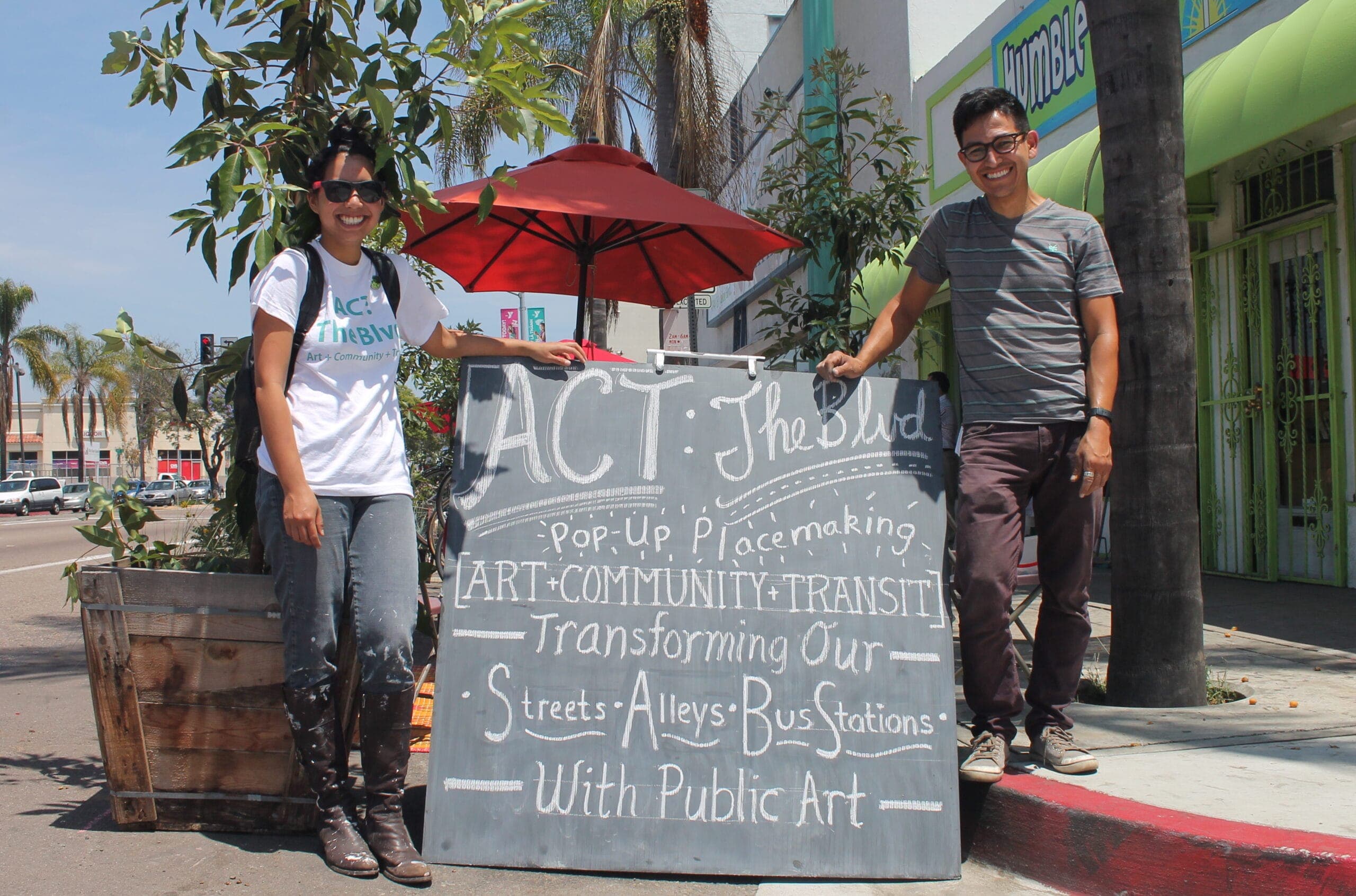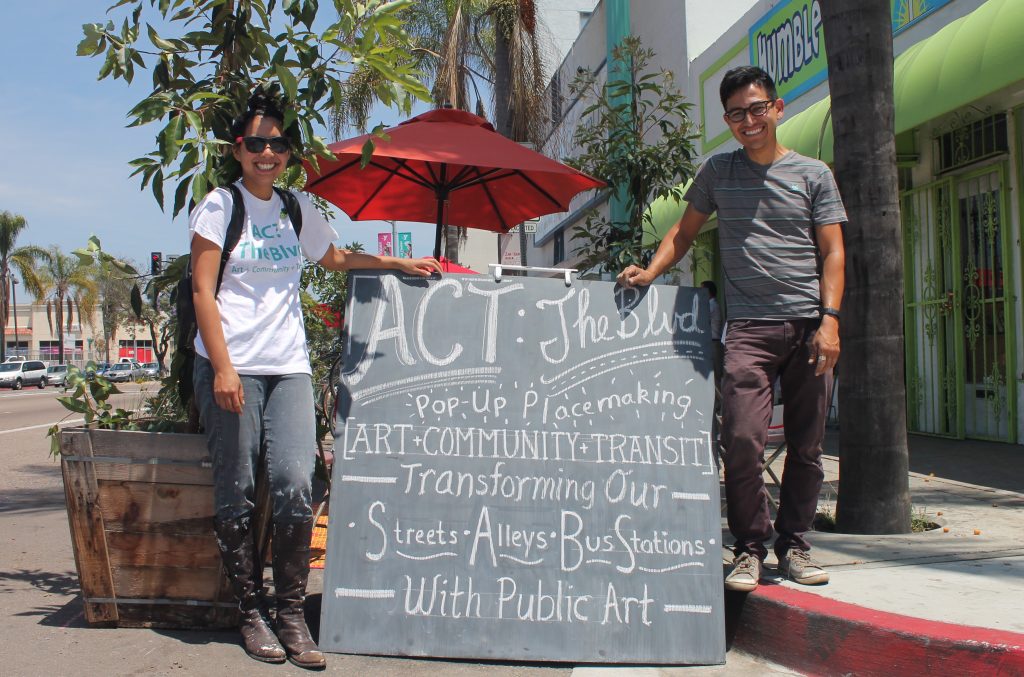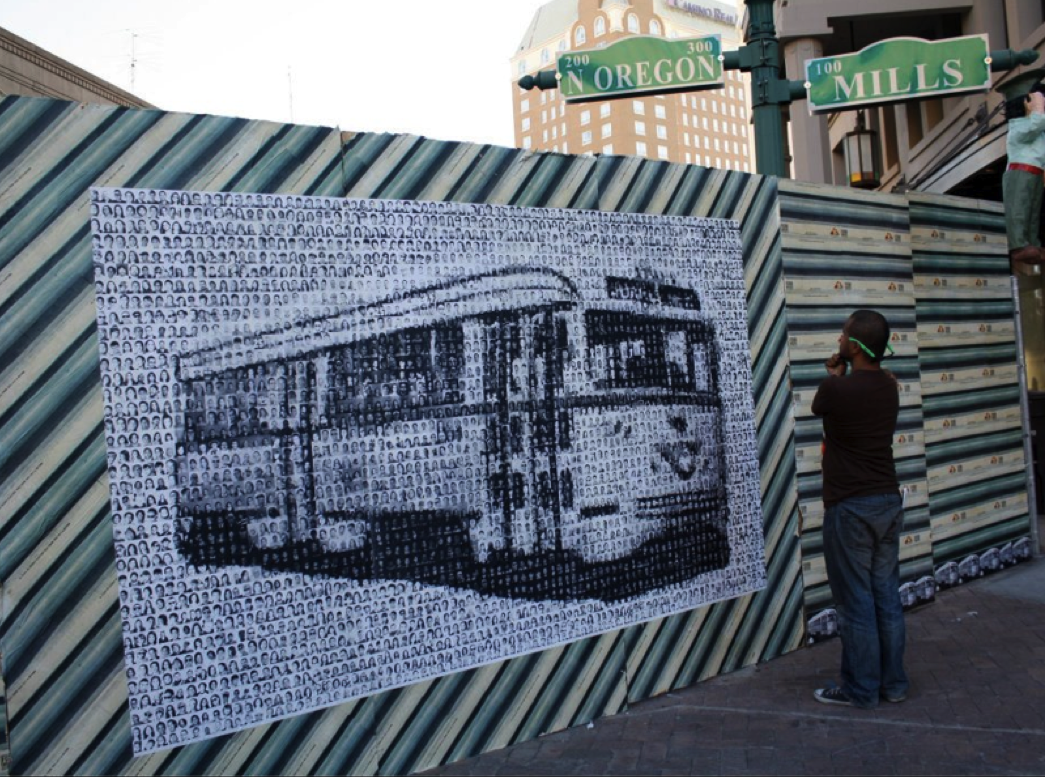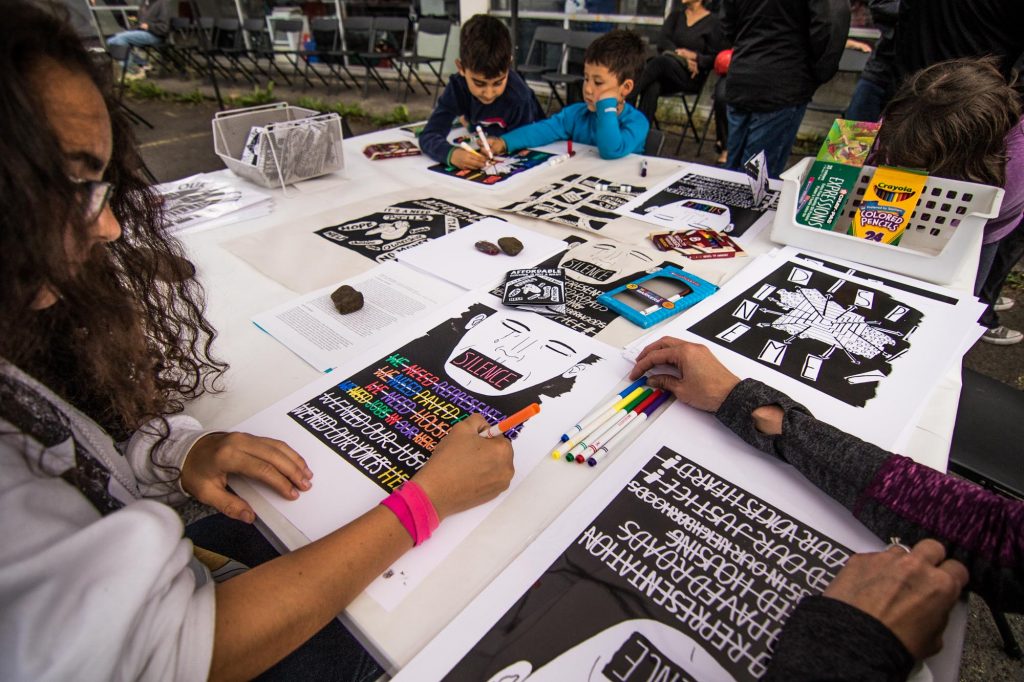
News
By Steve Davis, September 8, 2017
Throughout the rest of September, we’ll be celebrating the positive impact that arts and culture have on our communities through a handful of inspiring local stories. The month will culminate with the release of a new examination of creative placemaking by our Transportation for America program in partnership with ArtPlace America.

Why spend the better part of a month talking about arts and culture? And what does it have to do with building better transportation projects or improving lives by improving communities, as SGA seeks to do?
Every great place — whether small town, big city, local neighborhood — also has a unique sense of itself that’s reflected in or supported by the arts and local culture. Because the arts are a core part of strengthening the social, physical, and economic fabric of communities, they’re also a key part of smarter growth, which is all about building great, sustainable, lovable places.
We’re going to spend this month — largely through the lens of our Transportation for America program — telling a handful of stories about how arts and culture are essential to building better transportation projects that do more to lift up and celebrate what’s unique about the local communities where they are located.
Hopefully you’ve already pored over The Scenic Route, T4America’s primer to creative placemaking in transportation. But we’ve got more coming: ArtPlace America selected T4America to partner with them to undertake a rigorous national examination of creative placemaking to better understand how and where artists, designers, and cultural workers are collaborating with local governments and community partners to solve transportation challenges.
As we get prepare to release this “field scan” later in September with ArtPlace America, we are going to share a handful of stories that bring this issue to life; stories that show how arts and culture are not a “nice to have” when it comes to transportation or local community development projects — they’re essential.
As part of Arts & Culture month, we kicked off a new Arts & Culture email list from SGA and our Transportation for American program. Sign up to stay up to date on all of our creative placemaking projects >>
Subscribe to the Arts & Culture mailing list
And don’t forget to tune in throughout the rest of September as we share stories each week on our blog and on social media. Here are the stories that we’ve shared so far:
El Paso’s Transnational Trolley: How art can help imagine creative transportation solutions
September 8, 2017
What began as a sort of arts-driven guerilla marketing campaign for the fictional return of a historic streetcar in the border communities of El Paso, TX and Ciudad Juárez, Mexico, is becoming a reality, a demonstration of the power of art to capture the imagination of a community and help them look at old problems in different ways and imagine creative solutions. Read more >>

Engaging east Portland to plan a more inclusive bus rapid transit line
September 12, 2017
When roughly 14 miles of a bus rapid transit line was proposed along Division Street in East Portland, the effort was greeted with interest in an often-neglected area of the city, but also concern about the possibilities of displacement and development poorly engaged with the unique local culture. To address those concerns, community members throughout the Jade and Division Midway districts were engaged through arts and culture projects to recalibrate the plan to better serve community needs. Read more >>
Irrigate: Turning a huge Twin Cities construction project into an opportunity
September 21, 2017
Though the new Green Line light rail line would finally connect the Twin Cities of Minneapolis and St. Paul with rail transit, business owners, local leaders, and advocates raised red flags about construction disrupting the corridor’s businesses as well as immigrant and communities of color. To mitigate these negative effects, Springboard for the Arts and other local organizations created a series of artistic interventions that did more than merely prevent painful disruptions; they helped the corridor thrive during a period of vulnerability. Read more >>

Related News

© 2025 Smart Growth America. All rights reserved
Site By3Lane Marketing









